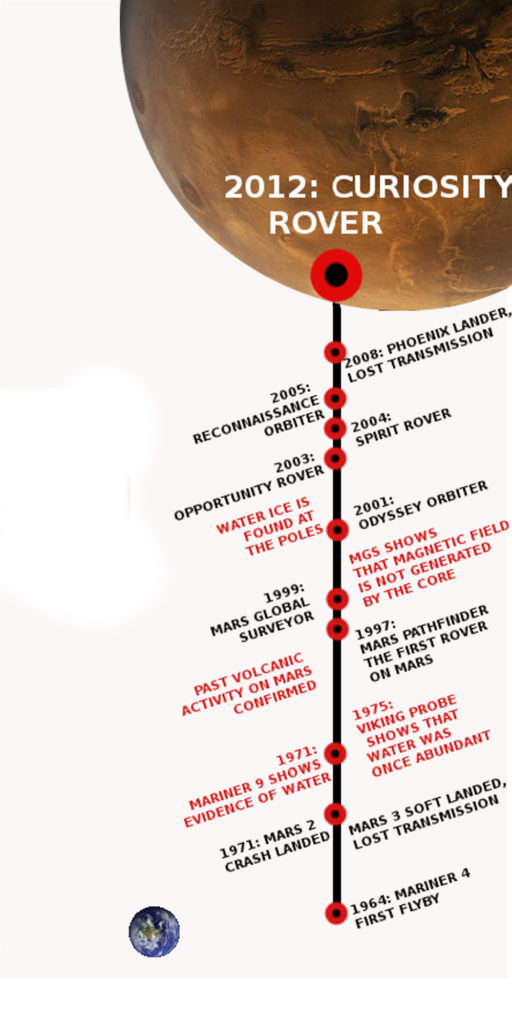An explanation of what the Mars rover is doing and why it’s there
Alisa Gomziakova
Contributor

On a mission to find remnants of life, NASA’s Curiosity rover was lowered from a rocket-powered sky crane on the surface of Mars on August 6, 2012.
The US $2.5 billion mission is set to last nearly two years, during which time the rover will investigate the landing site of the Gale Crater, a crater formed when a meteor hit the planet almost four million years ago.
Curiosity will then visit Mount Sharp, the mountain inside the Gale Crater. The search for signs of habitability remains the primary objective: the rover will collect geological evidence of water flow, and the biological signatures of ancient microbial life.
Weighing about two tonnes
and measuring in at seven feet
tall, Curiosity towers over its
predecessors.
Curiosity is equipped with 17 high-resolution cameras to help scientists identify features of interest. The team of scientists analyzes the information coming in.
“We put it all together and we look at the patterns that we see from orbit—and we make decisions based on what looks interesting, what looks significant and, most importantly, what hypothesis can we test by analyzing this rock versus that rock,” John Grotzinger, Mars Science Laboratory project leader, explains in Scientific American magazine.
Jesse Tebbs, co-captain of York’s rover team, says while there are many differentiating features on NASA’s newest Mars rover, the most interesting feature of its design, by far, is the payload of equipment it will carry.
The rover functions as a mobile laboratory and will rely on its equipment to perform tests for the mission.
“The instruments on Curiosity will be able to answer questions about the environment on Mars, and answer questions about the possible existence of extremophiles [microorganisms that live in extreme environments], past or present,” Tebbs explains.
One of the features is the ChemCam laser characterization instrument. With a pulse of the mounted laser, the ChemCam vapourizes the rock, which is analyzed with a spectrometer to determine the composition of the material.
The rover is also equipped with a the radiation assessment detector to measure the spectrum of radiation. Several radiation spikes caused by the sun have been observed since the rover’s landing.
Spain and Finland have provided the ultraviolet sensor, a part of the rover environmental monitoring station, and the dynamic albedo of neutrons, a Russian instrument, detects subsurface water.
Curiosity has everything it could possibly need up on Mars, but is there anything amiss?
“Curiosity is expected to run at least a full Martian year (687 earth days),” says Tebbs. “It would be good if Curiosity had the capability to extend the mission beyond this time frame.”
Tebbs says the research Curiosity needs to do may be much more extensive, and more time on Mars would be ideal.
The Curiosity rover represents the best engineering humans have to offer. With the advent of such advanced technology, the so-called dead planet has displayed a rich geological history and diversity and has convinced scientists that it could have once been inhabitable.
Our intimacy with Mars grows with every new mission. Each mission contains the very best of human effort, presented for a small chance at understanding our neighbouring planet.


